Piano Patterns: Fingerings for Scales, Chords, and Arpeggios is a tool designed for pianists of every level to avoid frustration and find more freedom in the practice room.

That’s what it means to be a pianist.
But the journey from where you start to that vision involves hours alone in the practice room. It can mean confusion and frustration.
How do you know you’re even using the “right” fingerings for scales, chords, arpeggios, or other figures?
How do those pianists play flourishes so fast?
How do they get from starting a difficult piece to performing it?
It’s all about patterns.
Music is full of patterns, and if you have standard fingerings for every common pattern, then you automatically have fingerings for most of the music you’ll come across.
But how do you come up with fingerings that will work for all of those patterns?
Piano fingering is an art, not a science.
There is no one correct way to finger a passage; there’s only what fits best for your hand and your interpretation.
But how do you decide what’s best for you?
Oftentimes, teachers just tell you what to do, but if you don’t have a teacher, or you just want to understand how to pick fingerings on your own (so you can spend less time frustrated and confused and more time playing and learning and having fun), there are 3 elements you can consider.
Comfort, consistency, and musicality.
Comfort refers to technique. When we use good technique, playing the piano feels physically good. Not only is there an absence of pain, but there’s a sense of sinking into the keys. It’s relaxing.
Fingering ties to technique because the fingerings we choose can make it harder or easier to relax.
When we have a basis of comfortable fingerings for common patterns in music, it sets us up to be more relaxed in less time.
Consistency refers to using the same fingerings for the same patterns.
We don’t have to spend time thinking about fingerings for those patterns ever time, and it’s quicker and easier to memorize pieces of music.
Instead of thinking about each individual note—“1 on C, 2 on D, 3 on E”—you only have to think, “C major scale.” It’s less information to retrieve, so it’s faster and easier.
And musicality refers to phrasing. Where we turn our hands over or jump our hands matters. Pianists don’t have to breathe to produce sound, but musicality is still based on “making the music breathe.”
Knowing basic patterns in music gives you insight into where phrases begin and end. Fingering adjustments allow you to play louder or softer, more marked or more connected.
Piano Patterns gives you the fingerings for the most basic patterns in music.
Scales, chords, and arpeggios are often called the building blocks of music.
Basic patterns are great case studies for how to choose fingering.
It also explains how those fingerings came about.
Using the framework of comfort, consistency, and musicality helps you figure out solid fingerings for real pieces of music. Fingerings for scales, chords, and arpeggios have become standardized over time, but you don’t have to use those specific fingerings. Piano Patterns: Fingerings for Scales, Chords, and Arpeggios shows how these fingerings developed and how you can adjust them to fit your hands better while still meeting the goals of comfort, consistency, and musicality.
The Result: Less Frustration, More Freedom
When you’re not weighed down by the fingerings you choose, you’re already much closer to being the strong pianist you dream about.
You can have confidence in your fingering, playing, and memory, and focus instead on what’s important: making music to connect with others.
That human–emotional connection is what makes music so special.
Focus on that instead.
For just $19, Piano Patterns includes a digital copy of
138 pages of sheet music that gives fingerings for:
- Major and Minor Pentascales
- Major and Minor Scales
- Chromatic Scale
- Whole Tone Scales
- Major and Minor Pentatonic Scales
- Major and Minor Blues Scales
- Triad and Seventh Block Chords
- Triad and Seventh Arpeggios
The book also includes explanations for how each of these scales and chords are built as well as specific strategies for choosing solid fingerings for each. These strategies support the three goals of comfort, consistency, and musicality in playing.


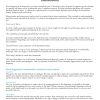


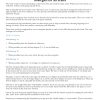



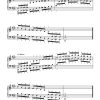

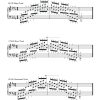
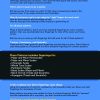




Reviews
There are no reviews yet.